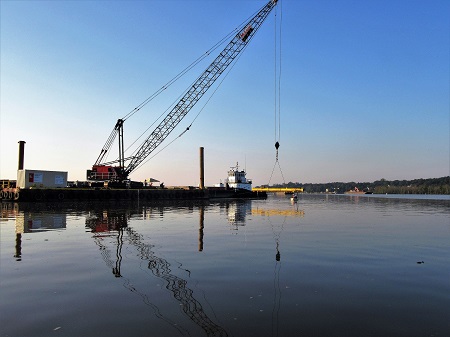Crews operating barges, cranes and boats are at work this fall, 2018, building the breakwater in the Dyke Marsh Wildlife Preserve, the first stage of Dyke Marsh restoration. The U.S. Geological Survey’s 2010 and 2013 studies identified building a breakwater as the first priority of restoration, a riprap structure designed to replicate the historic promontory removed by dredgers.
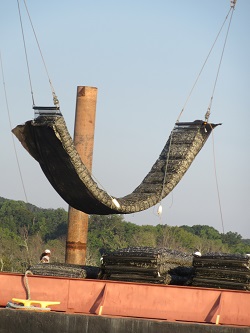 A crane lifts the marine mattress from the barge.The former promontory, USGS experts explained, was a natural feature that protected the wetlands system. Without action, USGS scientists said, “Dyke Marsh likely will continue to accelerate its degradation, erosion and fragmentation until it is gone. This likely will occur prior to 2035 AD.”
A crane lifts the marine mattress from the barge.The former promontory, USGS experts explained, was a natural feature that protected the wetlands system. Without action, USGS scientists said, “Dyke Marsh likely will continue to accelerate its degradation, erosion and fragmentation until it is gone. This likely will occur prior to 2035 AD.”
The National Park Service’s 2014 environmental impact statement found that removal of the promontory “altered the hydrology of the marsh. Construction of the breakwater in that area would redirect erosive flows in the marsh, particularly during strong storms, and would re-establish hydrologic conditions that would encourage sediment accretion.” The breakwater would also protect Hog Island Gut, a prominent feature of the marsh, “by introducing a bend in the channel and would also redirect flows and encourage sediment accretion,” concluded USGS.
Work on the breakwater will continue over the next few months.
Photos contributed by Glenda Booth.
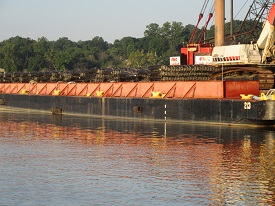 A barge is loaded with marine mattresses, gabion baskets filled with riprap to form the base of the breakwater. A barge is loaded with marine mattresses, gabion baskets filled with riprap to form the base of the breakwater. |
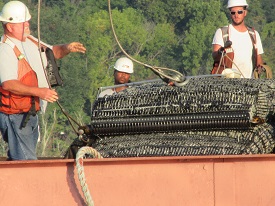 The crew is getting a marine mattress ready to be lifted off the barge. The crew is getting a marine mattress ready to be lifted off the barge. |
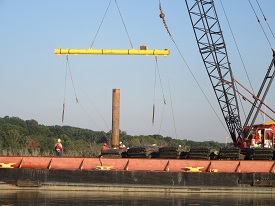 The crew, using a crane and boom, is getting ready to lift a marine mattress off the barge. The crew, using a crane and boom, is getting ready to lift a marine mattress off the barge. |
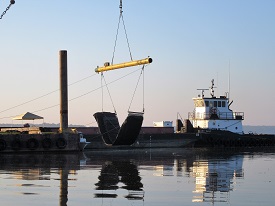 The crane lowers the marine mattress to the Potomac River bottom. The crane lowers the marine mattress to the Potomac River bottom. |
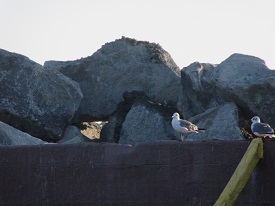 Large riprap stones (perches for gulls) are ready to be moved from the barge to the breakwater site. Large riprap stones (perches for gulls) are ready to be moved from the barge to the breakwater site. |
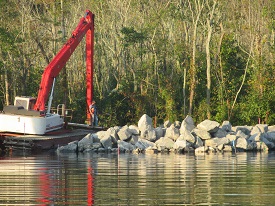 The beginning of the breakwater at the shoreline. The beginning of the breakwater at the shoreline. |

